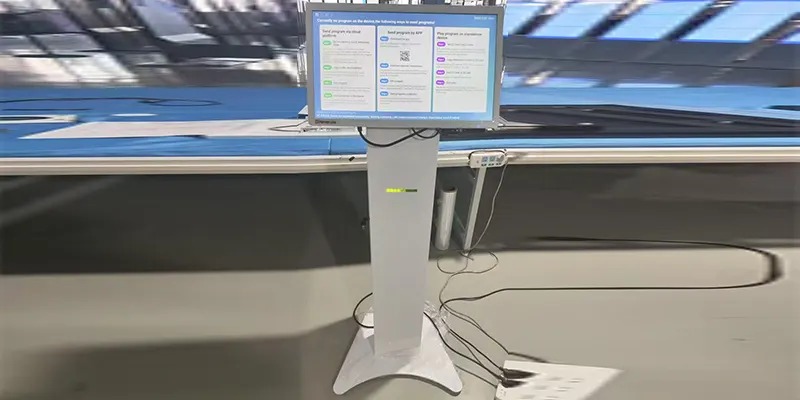The Future of Smart Information: How Touch Inquiry All-in-One Machines Are Transforming User Experience
Summary:
This article explores how touch inquiry all-in-one machines are revolutionizing customer interaction and public information access. From retail to transportation, these interactive devices deliver convenience, efficiency, and engagement, making them essential tools for smart environments.
Keywords:
touch inquiry all-in-one machine, interactive kiosk, self-service terminal, digital inquiry machine, information display, interactive signage
In today’s fast-paced digital era, businesses and institutions are looking for smarter, more engaging ways to connect with their audiences. The touch inquiry all-in-one machine has become a symbol of this transformation. Combining sleek hardware design with powerful software, these devices provide self-service convenience, real-time data access, and immersive user experiences.
Whether in shopping malls, airports, hospitals, or government offices, a touch inquiry all-in-one machine serves as a bridge between technology and people—reducing wait times, improving service efficiency, and providing intuitive navigation for users of all ages.
What Is a Touch Inquiry All-in-One Machine?
A touch inquiry all-in-one machine (also known as an interactive kiosk or self-service terminal) is a digital device equipped with a touch-sensitive display that allows users to access information or services independently. These systems often include network connectivity, printers, card readers, and cameras for extended functionality.
Modern machines feature high-resolution screens, responsive multi-touch controls, and durable enclosures suitable for heavy public use. With customizable software, businesses can display maps, menus, directories, or advertisements, making every interaction efficient and engaging.
Key Features:
High-Definition Display: Crisp, bright visuals ensure clear visibility even in bright environments.
Multi-Touch Control: Smooth, responsive operation for quick inquiries and transactions.
Customizable Interface: Adapt the interface to match brand identity or service requirements.
Durability: Anti-scratch tempered glass and sturdy enclosures for long-term use.
Smart Integration: Compatible with interactive signage, mobile payment, QR codes, and facial recognition.
Remote Management: Update content and monitor status from anywhere via cloud platforms.
Advantages:
Self-Service Convenience: Users can access information or complete transactions independently.
Enhanced User Experience: Intuitive interface and smooth interaction create a seamless experience.
Cost Reduction: Automates services, reducing labor costs.
24/7 Availability: Ideal for continuous operation in airports, hotels, and hospitals.
Brand Promotion: Eye-catching screens can display advertisements and promotional content.
Data Collection: Track user behavior for better marketing strategies.
Businesses using touch inquiry all-in-one machines report higher customer satisfaction, smoother service flow, and increased engagement rates.
Applications:
Shopping Malls & Retail: Product search, price check, loyalty programs, and advertisements.
Airports & Train Stations: Real-time schedules, check-in, and navigation guides.
Hospitals & Clinics: Appointment registration and department directions.
Government Offices: Self-service document printing, form submission, and queue management.
Hotels & Restaurants: Check-in systems, ordering kiosks, and service feedback terminals.
Exhibitions & Museums: Interactive guides and multimedia introductions.
Choosing the Right Machine:
Define your purpose: Information display, payment, or ticketing.
Screen size & orientation: Commonly 32–55 inches, vertical or horizontal.
Software compatibility: Ensure integration with your operating system and business tools.
Network & security: Secure connections and remote management capabilities.
Durability & maintenance: Choose a reliable manufacturer with warranty support.
A well-designed touch inquiry all-in-one machine not only improves operational efficiency but also enhances brand image, turning first-time visitors into repeat customers.
FAQ:
Q: What is it used for?
A: Interactive information display, self-service inquiries, and digital communication.Q: Can it work outdoors?
A: Yes, many models have waterproof enclosures, anti-glare glass, and temperature control.Q: Can the interface be customized?
A: Absolutely. You can tailor logos, colors, and content layout.Q: How is maintenance handled?
A: Clean the screen regularly, check connections, and update software as needed.Q: What is the most popular screen size?
A: 32–43 inches for general use, 49–55 inches for public directories or advertising.Q: Can content be updated online?
A: Yes, cloud-based systems allow remote media and software updates.

